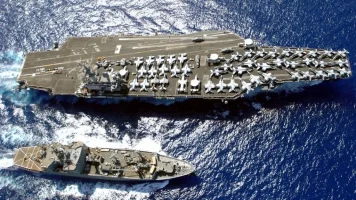- Views: 3K
- Replies: 9

Concerns are rising within the Indian defence establishment over reports that Pakistan is set to acquire 40 Chinese J-35A stealth fighter jets within the next two years. This acquisition, coupled with Pakistan's ongoing naval modernization with Chinese support, has raised alarms about a potential strategic imbalance in the region.
The J-35A, a cutting-edge multirole stealth fighter developed by China's Shenyang Aircraft Corporation, is capable of executing missions on both land and sea. This acquisition would significantly bolster Pakistan's air combat capabilities at a time when the Indian Air Force (IAF), despite its global ranking, is grappling with a shrinking combat fleet and delays in modernization programs.
The IAF is facing a significant challenge in maintaining its operational readiness due to the phasing out of outdated MiG aircraft and delays in key indigenous projects like the LCA Tejas Mk-1A.
Further compounding the issue, the development of the Tejas Mk2 and the Advanced Medium Combat Aircraft (AMCA), India's fifth-generation stealth fighter jet, are still in the design phase. The much-anticipated Multi-Role Fighter Aircraft (MRFA) program for 114 foreign jets has also seen delays.
While there is no official confirmation of the J-35A deal between China and Pakistan, observers suggest it could be a result of recent high-level military discussions between the two countries. This development underscores China's growing role in enhancing Pakistan's defence capabilities.
Pakistan's air power has been steadily improving with Chinese assistance, including the joint production of JF-17 Thunder fighter jets and the acquisition of J-10C fighter jets. The addition of J-35A stealth fighters would mark a significant leap in Pakistan's air combat capabilities.
On the naval front, Pakistan is also pursuing an ambitious modernization plan with Chinese support, including the acquisition of advanced submarines and frigates. This, coupled with the development of maritime patrol aircraft, is enhancing Pakistan's maritime surveillance and strike capabilities.
These developments pose a considerable challenge for India, which is struggling to maintain its fourth-generation fighter fleet and modernize its air force. The potential introduction of J-35A stealth fighters in the region could create a strategic imbalance, necessitating a comprehensive response from India to maintain its air dominance and regional security.




